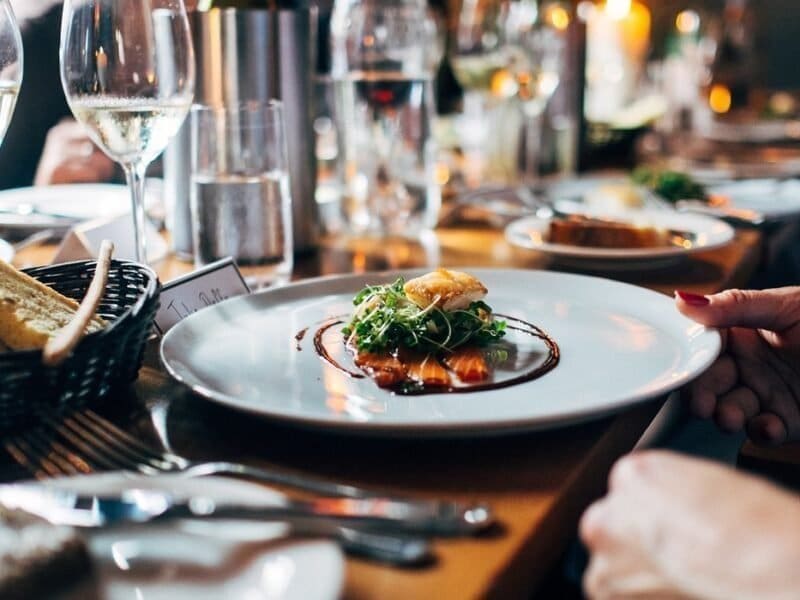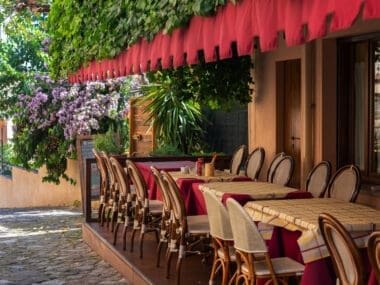Table of Contents Show

Mastering the art of dining in Paris: your guide to experiencing French cuisine like a local (FAQ included)
Dining in Paris goes far beyond simply having a meal; it’s an experience that immerses you in the rich history, culture, and culinary artistry of France. Imagine wandering down charming cobblestone streets, enticed by the aroma of freshly baked bread and savory dishes that float through the air. Whether you’re sipping coffee at a cozy café or indulging in a Michelin-starred dinner, Paris offers a dining adventure like no other.
However, for first-time visitors, the Parisian dining scene can be both exciting and overwhelming. How do you behave at a French restaurant? What’s the proper etiquette? How do you choose the best places to eat? And how do you make the most of your dining experience? This guide will provide all the tips you need to eat like a Parisian and discover the city’s renowned gastronomy.
Embrace the art of slow dining
In Paris, dining isn’t rushed. It’s an experience meant to be savored. Parisians love to linger over their meals, especially dinner, which can last for hours. So when you’re dining out, don’t expect fast service or a quick meal. Instead, take your time and enjoy each course—after all, you’re here to enjoy every moment of it.
A typical Parisian meal begins with an aperitif, a light drink such as champagne or kir to stimulate your appetite. Then comes the entrée (starter), plat principal (main dish), and finally dessert. Meals are often followed by coffee or an after-dinner digestif. Dining in Paris is about enjoying the conversation, the flavors, and the ambiance, so sit back and take it all in.
Explore the neighborhoods for authentic dining experiences
Some of the best restaurants in Paris aren’t in the tourist-packed areas but tucked away in local neighborhoods like Le Marais, Montmartre, and Saint-Germain-des-Prés. These areas are home to bistros, brasseries, and hidden gems where locals gather for a more authentic dining experience. Exploring these areas gives you the chance to discover unique spots that embody the true spirit of French cuisine.
Avoid restaurants near major tourist attractions with large, multilingual menus, as these tend to cater more to tourists than locals. Instead, opt for smaller, bustling spots where Parisians dine—these often serve up some of the best food in the city.
Understanding the difference between bistros, brasseries, and gastronomic restaurants
When dining in Paris, it’s important to understand the different types of dining establishments. Each offers a distinct culinary experience:
- Bistros: Small, intimate restaurants that offer traditional French cuisine in a relaxed setting. Think comfort food like boeuf bourguignon or cassoulet.
- Brasseries: Larger, often more lively venues with a wide menu that includes everything from seafood to steak. These are usually open all day.
- Gastronomic restaurants: Fine-dining establishments where chefs focus on presentation and high-quality ingredients. Expect tasting menus and innovative dishes.
When choosing where to eat, consider the type of experience you want—whether it’s a casual bistro meal or a multi-course gastronomic adventure.
Tips for mastering Parisian dining etiquette
French dining etiquette is steeped in tradition, and understanding these customs can elevate your dining experience:
- Greet the staff: Always say bonjour when entering a restaurant or café. It’s considered rude to sit down without acknowledging the staff.
- Take your time: Meals in Paris are meant to be leisurely, so don’t rush through your courses. Enjoy the pace and take in the atmosphere.
- Ask for the bill: Unlike in many countries, servers won’t bring you the bill unless you ask for it. When you’re ready, say L’addition, s’il vous plaît.
- Tipping: In Paris, a service charge is usually included in the bill, so tipping isn’t mandatory. However, leaving a small tip (a few euros or rounding up the bill) is a nice gesture for exceptional service.
Learn basic French dining phrases
Knowing a few essential French phrases can enhance your experience. Here are some useful ones:
- Bonjour: Hello (always greet the staff when you enter).
- Je voudrais…: I would like… (use this to place your order).
- Qu’est-ce que vous me recommandez?: What do you recommend? (ask for suggestions from the waiter).
- L’addition, s’il vous plaît: The bill, please (when you’re ready to pay).
Even if you’re not fluent in French, attempting to use these phrases shows respect and often results in better service.
Timing your reservations
Timing is everything when it comes to dining in Paris. Lunchtime is typically between noon and 2:30 p.m., and dinner is served from 7:30 p.m. onward. Restaurants tend to fill up fast, especially in the evening, so it’s a good idea to make a reservation. For a more relaxed experience, try booking during off-peak hours, like an early lunch or a later dinner.
When making a reservation, don’t hesitate to ask about the day’s specials or what’s freshest. Many Parisian restaurants focus on seasonal ingredients, and the chef’s recommendations are often a highlight of the menu.
The best way to get to your restaurant
Getting around Paris to reach your restaurant is part of the dining adventure. The most convenient way is by Métro—it’s quick, reliable, and stops are conveniently located near most neighborhoods. For those who prefer a private option, taxis and rideshare services like Uber are also widely available but can be slower due to traffic. Walking is another excellent option if your restaurant is nearby, as Paris is one of the most beautiful cities to explore on foot.
Dress code for dining in Paris
Paris is known for its chic fashion sense, and dining out is no exception. For casual bistros or cafés, a smart casual dress code will suffice. However, for more upscale restaurants or gastronomic venues, you’ll want to dress a bit more formally. For men, a collared shirt and nice shoes are often expected, while women can opt for an elegant dress or stylish outfit.
It’s always a good idea to check the restaurant’s website for any specific dress code guidelines. Looking the part will enhance your overall dining experience and ensure you feel comfortable wherever you go.
Gluten-free options in Paris
Paris is becoming increasingly friendly to those with dietary restrictions, including gluten-free diners. Many restaurants now offer sans gluten (gluten-free) options, and some even specialize in gluten-free cuisine. Look for places like NoGlu or Café Mareva, which cater specifically to gluten-sensitive patrons. When in doubt, inform your waiter of your dietary needs, and they will usually accommodate your requests.
Sample the best French wines and cheeses
Don’t leave Paris without indulging in its world-class wines and cheeses. Most restaurants offer carefully curated wine lists, often with staff or sommeliers who are more than happy to recommend the perfect pairing for your meal. From creamy Brie de Meaux to pungent Roquefort, French cheeses are a must-try. Pair them with a glass of Bordeaux or Burgundy for a quintessential Parisian dining experience.
FAQ: dining in Paris
1. How is dining in Paris different from other places?
Dining in Paris is all about enjoying the moment. Meals are long and leisurely, designed to be savored over several courses. Unlike other cities where dining can be rushed, Parisians take their time and focus on conversation, food, and ambiance.
2. What is the difference between a bistro, brasserie, and gastronomic restaurant?
A bistro is a small, casual restaurant offering traditional French fare. A brasserie is larger and serves a wide variety of dishes throughout the day. Gastronomic restaurants are fine-dining establishments with a focus on high-end, artfully prepared meals.
3. Do I need to tip in Paris?
Tipping is not required in Paris, as service charges are included in the bill. However, leaving a small tip for exceptional service is always appreciated.
5. Are there gluten-free options in Paris?
Yes, many Parisian restaurants now offer gluten-free options. Some even specialize in gluten-free cuisine. Always mention your dietary restrictions when booking a table.
6. What is the best way to reach my restaurant in Paris?
The Métro is the fastest and most convenient way to travel in Paris. Alternatively, you can use taxis or rideshare apps like Uber, but traffic may cause delays. Walking is often the best option if your restaurant is nearby.



